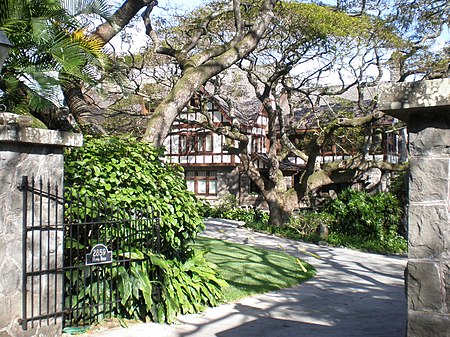Charles Montague Cooke Jr. House and Kūkaʻōʻō Heiau
1912 establishments in HawaiiBuildings and structures in HonoluluHeiauHistory of OahuHouses completed in 1912 ... and 4 more
Houses in Honolulu County, HawaiiHouses on the National Register of Historic Places in HawaiiNational Register of Historic Places in HonoluluNative Hawaiian culture in Honolulu

Charles Montague Cooke Jr. House and Kūkaʻōʻō Heiau is a property in Honolulu, Hawaii. The house, also known as Kualii (also spelled Kualiʻi), was built in 1911–1912 for Charles Montague Cooke Jr., and listed on the National Register of Historic Places in 1985. The listing's boundaries were increased in 2000 to include the Kūkaʻōʻō Heiau (Tax Map Keys 2-9-19:35 and 2-9-19:43, respectively).
Excerpt from the Wikipedia article Charles Montague Cooke Jr. House and Kūkaʻōʻō Heiau (License: CC BY-SA 3.0, Authors, Images).Charles Montague Cooke Jr. House and Kūkaʻōʻō Heiau
East Manoa Road, East Honolulu Manoa
Geographical coordinates (GPS) Address Nearby Places Show on map
Geographical coordinates (GPS)
| Latitude | Longitude |
|---|---|
| N 21.308055555556 ° | E -157.81666666667 ° |
Address
East Manoa Road 2563
96822 East Honolulu, Manoa
Hawaii, United States
Open on Google Maps






